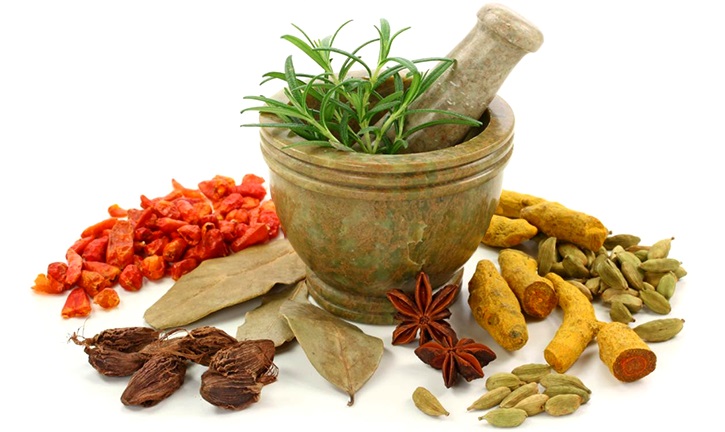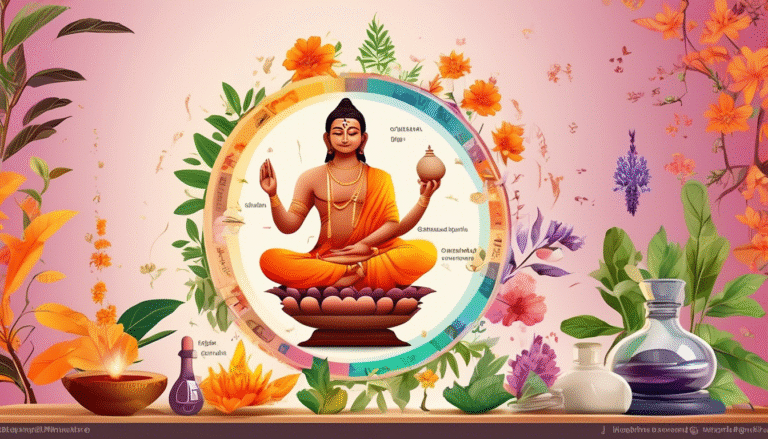Unlocking the Key Principles of Siddha: Exploring the 96 Thathuvam, 5 Elements, and 3 Humors

Introduction to Siddha Medicine
Siddha medicine is a profound and ancient system of healing that has its roots in South India. As I delve into this rich tradition, I find myself captivated by its holistic approach to health and wellness. Siddha is not merely a medical practice; it embodies a philosophy that seeks to balance the physical, mental, and spiritual aspects of the individual.
The core principles are deeply intertwined with nature and the universe, emphasizing the importance of understanding our environment and ourselves.
At the heart of Siddha medicine lies the concept of the 96 Thathuvam, which refers to the fundamental principles that govern the universe and human existence. These principles form the foundation of Siddha philosophy, offering insights into the nature of life and health.
As I explore these concepts, I can’t help but appreciate their relevance in today’s fast-paced world, where many of us are searching for deeper meaning in our lives.

In this article, I will guide you through the essential elements of Siddha medicine, including the 5 Elements and the 3 Humors. Together, these components create a comprehensive framework that illustrates the interconnectedness of all things. By understanding these principles, we can unlock the secrets to better health and well-being.
Understanding the 96 Thathuvam
The 96 Thathuvam is a fascinating aspect of Siddha medicine, encompassing various elements that define our existence. These principles can be broadly categorized into three groups: the Pancha Bootham (five elements), the Pancha Indriyam (five senses), and the Pancha Karma (five actions).
Each of these categories contributes to our understanding of the universe and our place within it.
- Pancha Bootham: This group consists of Earth (Prithvi), Water (Apas), Fire (Tejas), Air (Vayu), and Space (Akasha). These elements represent the physical world and our bodily composition. For instance, the Earth element symbolizes stability and structure, while Water relates to fluidity and adaptability.
- Pancha Indriyam: Our senses—sight, hearing, touch, taste, and smell—allow us to interact with the world around us. Each sense has its corresponding element, creating a unique connection between our perception and the environment. Understanding this relationship can enhance our awareness and appreciation of the natural world.
- Pancha Karma: These actions encompass the fundamental processes of life, including ingestion, digestion, excretion, respiration, and reproduction. The balance of these actions is vital for maintaining health and well-being, as they influence our physical and mental states.
As I reflect on the 96 Thathuvam, I realize that it serves as a roadmap for understanding our existence. By recognizing the interplay between these elements, senses, and actions, we can cultivate a deeper connection with ourselves and the world around us.
The Role of the 5 Elements in Siddha
The 5 Elements play a crucial role in Siddha medicine, forming the basis of our physical and mental make-up. Each element possesses unique qualities and characteristics that influence our health and well-being.
By understanding these elements, we can learn how to harness their energy to create harmony within ourselves.
Earth (Prithvi)
The Earth element symbolizes stability, grounding, and nourishment. It is associated with our physical body and the material aspects of life.
When I think of Earth, I envision the strength and resilience that it provides. In Siddha philosophy, a balanced Earth element contributes to good physical health and a strong foundation for our emotional well-being.
Water (Apas)
Water represents fluidity, adaptability, and cleansing. It is essential for life, serving as a medium for all biological processes.
The Water element is also linked to our emotions and creativity. When this element is in balance, I find that my emotional responses are more manageable, allowing me to navigate life’s challenges with grace.
Fire (Tejas)
Fire embodies transformation, energy, and motivation. It is the catalyst for change, driving our desires and ambitions. In Siddha medicine, a balanced Fire element enhances our digestive health, metabolism, and overall vitality.
I have noticed that when I harness the energy of Fire, I feel more motivated and focused on achieving my goals.
Air (Vayu)
Air symbolizes movement, communication, and life force. It represents our breath and the vital energy that sustains us. A balanced Air element fosters clear communication and mental clarity.
I have often found that when I engage in deep breathing exercises, I feel a renewed sense of energy and focus, allowing me to connect with my inner self.
Space (Akasha)
Space represents the vastness of the universe and the potential for growth and expansion. It is the arena in which all elements exist and interact.
The Space element encourages creativity, intuition, and spiritual growth. Embracing this element has allowed me to explore new possibilities and open myself to the wonders of life.
By understanding the 5 Elements, we can cultivate balance and harmony in our lives. Each element contributes to our overall health and well-being, and recognizing their influence helps us make informed choices for our physical, mental, and emotional states.
Exploring the 3 Humors: Vatha, Pitha, and Kapha
In Siddha medicine, the 3 Humors—Vatha, Pitha, and Kapha—serve as vital concepts for understanding our health and balance. These humors correspond to the elements and govern our physiological and psychological functions.
As I explore each humor, I gain insights into how they manifest in my life and how I can maintain equilibrium.
Vatha (Air and Ether)
Vatha is primarily associated with the qualities of Air and Space. It governs movement, communication, and the nervous system. When I consider Vatha, I recognize its influence on my energy levels, creativity, and adaptability. However, an imbalance in Vatha can lead to anxiety, restlessness, or digestive issues.
To maintain balance, I find that engaging in grounding activities, such as yoga or meditation, helps me connect with my body and calm my mind.
Pitha (Fire and Water)
Pitha is linked to the qualities of Fire and Water. It governs digestion, metabolism, and transformation. I often notice that when my Pitha is in balance, I feel energized, motivated, and focused.
However, an excess of Pitha can lead to irritability, inflammation, and digestive issues. To counteract this, I have learned to incorporate cooling foods and calming practices, such as mindfulness and herbal remedies, into my daily routine.
Kapha (Earth and Water)
Kapha embodies the qualities of Earth and Water. It governs structure, stability, and nourishment. When I think of Kapha, I associate it with feelings of calmness and contentment. However, too much Kapha can lead to lethargy, weight gain, and emotional heaviness.
To cultivate balance, I have found that engaging in physical activities and consuming light, energizing foods can help stimulate my energy levels and promote a sense of well-being.
By understanding the 3 Humors, we can better navigate our health and emotions. Recognizing our unique constitution allows us to make informed choices that promote balance and harmony in our lives.
The Interconnection Between the 96 Thathuvam, 5 Elements, and 3 Humors
One of the most fascinating aspects of Siddha medicine is the intricate interconnection between the 96 Thathuvam, 5 Elements, and 3 Humors. Each component influences and interacts with the others, creating a complex web of relationships that govern our health and well-being. As I explore these connections, I find that they provide valuable insights into my own life.
For instance, the 5 Elements serve as the building blocks for the 3 Humors. Each humor is influenced by the elemental qualities, which means that when I identify an imbalance in my humor, I can trace it back to the corresponding elements.
By addressing the elemental imbalances, I can restore harmony to my humors and, ultimately, my overall health.
Moreover, the 96 Thathuvam provides a broader context for understanding the interplay of these elements and humors. By recognizing the principles that govern the universe, I can better appreciate how my individual health is a reflection of the larger cosmic order.
This holistic perspective allows me to approach wellness from a comprehensive standpoint.
In my daily life, I have found that by aligning my actions with these principles, I can create a more balanced and harmonious existence. Whether it’s through mindful eating, engaging in physical activities, or practicing mindfulness,
I am continuously reminded of the importance of these interconnections. The beauty of Siddha medicine lies in its ability to guide us toward a deeper understanding of ourselves and our place in the world.
Practical Applications of Siddha Principles in Daily Life
As I explore the principles of Siddha medicine, I am continually inspired to incorporate these teachings into my daily life. The practical applications of the 96 Thathuvam, 5 Elements, and 3 Humors offer valuable guidance for achieving balance and well-being. Here are some ways I have found to integrate these principles into my routine:
1. Dietary Choices
One of the most effective ways to balance the 3 Humors is through mindful eating. I have learned to pay attention to the qualities of the foods I consume and how they correspond to the 5 Elements. For example, incorporating more cooling foods during hot weather helps balance excess Pitha, while grounding foods can stabilize Vatha.
By choosing foods that align with my body’s needs, I can enhance my overall health.
2. Mindful Practices
Incorporating mindfulness practices, such as meditation and yoga, has been transformative for my well-being. These practices help me connect with my body and mind while promoting balance across the 3 Humors.
I find that dedicating time each day to breathe deeply, meditate, or engage in gentle movement allows me to cultivate inner peace and clarity.
3. Seasonal Adjustments
Siddha principles emphasize the importance of aligning our lifestyles with the changing seasons. I have noticed that adapting my routine to the seasons can significantly impact my well-being. For instance, during the winter months, I focus on warming foods and activities to combat the heaviness of Kapha.
Conversely, in the summer, I prioritize cooling practices to balance excess Pitha. This seasonal awareness helps me maintain harmony throughout the year.
By applying these practical aspects of Siddha medicine, I have experienced a profound shift in my overall health and well-being. The principles offer a roadmap for navigating life’s challenges while fostering a deeper connection with myself and the universe.
The Importance of Balance in Siddha Medicine
Balance is a central theme in Siddha medicine, reflecting the philosophy that health is not merely the absence of illness but a harmonious state of being. As I explore the importance of balance, I recognize that it is essential for maintaining both physical and mental well-being.
Holistic Health
In Siddha medicine, balance encompasses not only the 3 Humors but also the 5 Elements and the 96 Thathuvam. Each component contributes to our overall health, and when one aspect is out of balance, it can lead to various health issues. I have learned that by nurturing each element and humor, I can create a harmonious state that supports my well-being.
Emotional Well-Being
Emotional balance is equally important in Siddha medicine. Our emotions are closely tied to the 3 Humors, and imbalances can manifest as stress, anxiety, or depression. I have found that cultivating emotional awareness and practicing self-care techniques, such as journaling and connecting with nature, helps me maintain emotional equilibrium.
Life Purpose
Ultimately, balance in Siddha medicine extends to our life purpose and spiritual growth. When I align my actions with the principles of Siddha, I feel a deeper sense of fulfillment and connection to the universe. By embracing balance, I can navigate life’s challenges with grace and purpose, creating a more meaningful existence.
Modern Interpretations of Siddha: Bridging Tradition and Science
As I reflect on the principles of Siddha medicine, I appreciate how they can be interpreted in modern contexts. In recent years, there has been a growing interest in integrating traditional practices with scientific research, leading to a deeper understanding of the effectiveness of Siddha principles.
Research and Validation
Several studies have begun to explore the benefits of Siddha medicine, confirming the efficacy of its practices. These investigations have shed light on the therapeutic potential of herbal remedies and holistic approaches. I find it encouraging that modern science is validating the wisdom of Siddha, bridging the gap between tradition and contemporary understanding.
Integration with Modern Wellness
The principles of Siddha can be seamlessly integrated into modern wellness routines. Many people are now seeking holistic approaches to health, embracing practices like mindfulness, yoga, and herbal medicine. As I incorporate these elements into my life, I feel a sense of connection to both ancient wisdom and modern practices, creating a comprehensive approach to well-being.
Cultural Preservation
By embracing modern interpretations of Siddha, we also contribute to the preservation of this ancient tradition. As more individuals recognize the value of Siddha medicine, there is a growing movement to honor and sustain its practices for future generations. I believe that by sharing knowledge and experiences, we can help keep these teachings alive and relevant.
How to Incorporate Siddha Principles into Wellness Routines
Incorporating Siddha principles into our wellness routines can enhance our overall health and well-being. Here are some practical steps I have taken to integrate these teachings into my daily life:
1. Start with Self-Assessment
Before making changes, I recommend conducting a self-assessment to understand my unique constitution and imbalances. This can involve reflecting on my physical, emotional, and mental states. By identifying areas that require attention, I can tailor my wellness routine to address my specific needs.
2. Create a Balanced Diet
I have found that focusing on a balanced diet that incorporates the 5 Elements is essential for maintaining health. I aim to include a variety of foods that correspond to each element, ensuring that my meals are nourishing and supportive. Additionally, I pay attention to seasonal changes and adjust my diet accordingly.
3. Establish Mindfulness Practices
Integrating mindfulness practices into my routine has been transformative. I set aside time each day for meditation, deep breathing exercises, or yoga. These practices help me cultivate awareness and promote balance across the 3 Humors. I encourage you to experiment with different techniques to find what resonates most with you.
4. Engage in Physical Activity
Regular physical activity is crucial for maintaining balance in Siddha medicine. I have discovered that engaging in activities that promote movement, such as walking, dancing, or practicing yoga, helps me stay connected to my body and release any stagnant energy. I aim for a holistic approach that incorporates both strength and flexibility.
5. Seek Guidance
If you are new to Siddha principles, I recommend seeking guidance from practitioners or resources that specialize in this ancient system. They can provide valuable insights and personalized recommendations based on your unique constitution and health goals.
By incorporating these steps into my wellness routine, I have experienced a profound shift in my overall health and well-being. The principles of Siddha serve as a guiding light, helping me navigate life’s challenges with grace and purpose.
Conclusion: Embracing the Wisdom of Siddha
As I conclude my exploration of Siddha medicine, I am reminded of the profound wisdom that this ancient system offers. The 96 Thathuvam, 5 Elements, and 3 Humors provide a comprehensive framework for understanding health and well-being. By embracing these principles, we can cultivate balance and harmony within ourselves.
The journey into Siddha medicine is not merely about physical health; it is a holistic approach that encompasses our emotional, mental, and spiritual well-being. As we navigate our lives, let us remember the interconnectedness of all things and the importance of nurturing our relationships with ourselves and the universe.
I invite you to explore the principles of Siddha medicine and discover how they can enhance your life. By incorporating these teachings into your daily routine, you can unlock the secrets to better health and well-being.
If you’re seeking further guidance on your journey, I encourage you to Get Real Siddha Answers from Priya Siddha Clinic – No Guesswork. Together, we can embrace the wisdom of Siddha and cultivate a life of balance, harmony, and fulfillment.





